I'm new to joining this forum but I've been reading along with many of the grows here for the past year or two. I don't generally like to ask for help but I'm truly at a loss as to what to do at this point. I believe my plants are suffering from a number of issues and I'm not really experienced enough to solve them myself. I've already read through the pest pictorial on the forum as well as about 30 other sick plant threads and can't definitively diagnose them as I don't have enough experience with growing plants (these are my first grow) so I thought it might be best to ask some of you more seasoned growers for some advice.
I'm including a buttload of photos because I think that's handier than trying to explain things. Sorry for the crappiness of them ahead of time, they're taken with my phone (the only thing I had handy).
Firstly, a bit about these plants. They are (mostly) NLX clones of about 4-5 weeks I'm guessing. They're with me for almost 2 weeks now, before that they were outside at a friend's place for about 2 weeks with 12 of them planted in 1 pot. When I got them, they were already showing signs of stress from overwatering and also the first two issues I list below. I tried my best to separate them and transplant them into new pots without much damage but they're currently very stressed (fan stems are completely purple on a few of them) and they don't appear to be growing right now. They're currently living in a fresh batch of Atami soil with nothing added to it and still vegging under 2 Secret Jardin T-neon armatures with two 75w bulbs in them. (I'd like to get a third but I'm holding off on that right now until these things are looking better) I'd like to send them to flower soon before they get any larger but I need to fix these issues first. I don't want my problems getting bigger, you know what I mean? ;D
Small overview of what my grow is looking like atm.
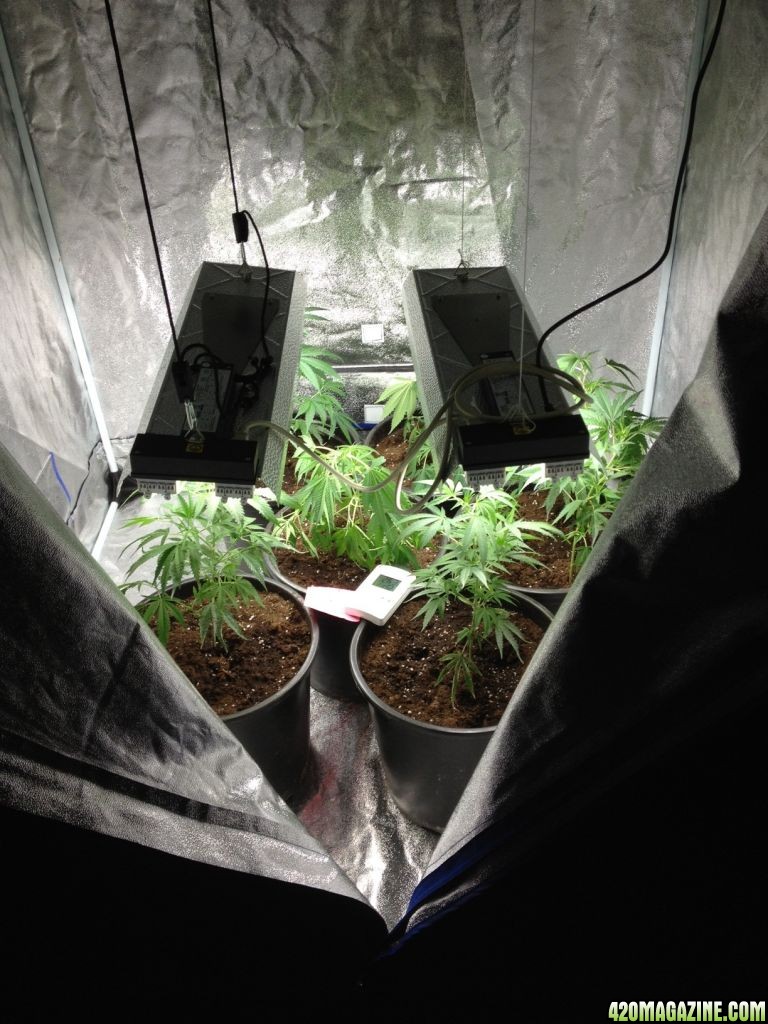
Problem #1 the white mystery fuzz/film.
This film on a lot of the lower fan leaves. In the beginning, I pulled a bunch of the worst leaves off with this problem, hoping it might help keep whatever it is from spreading but I don't know that it helped. At first i thought it might be mold but from what I've read, mold should wipe off. This won't wipe off at all and sometimes appears slightly hairy, and at others it seems like it's silky or slimy in appearance but I can't feel any difference between the two. I thought it could also maybe be spider mites... but then when I saw the bugs on my plant I wasn't completely sure since I don't see any actual webbing and the color of them is more yellowish... they look more like aphids perhaps? I'll add photos of them down below.
The mystery fuzz
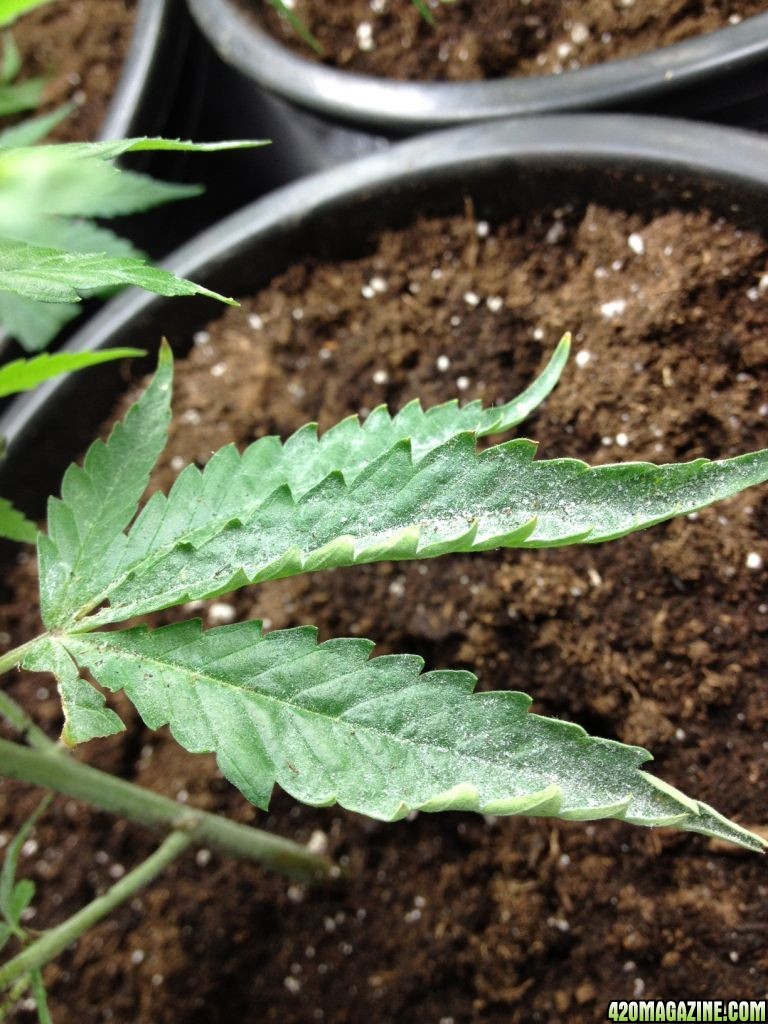
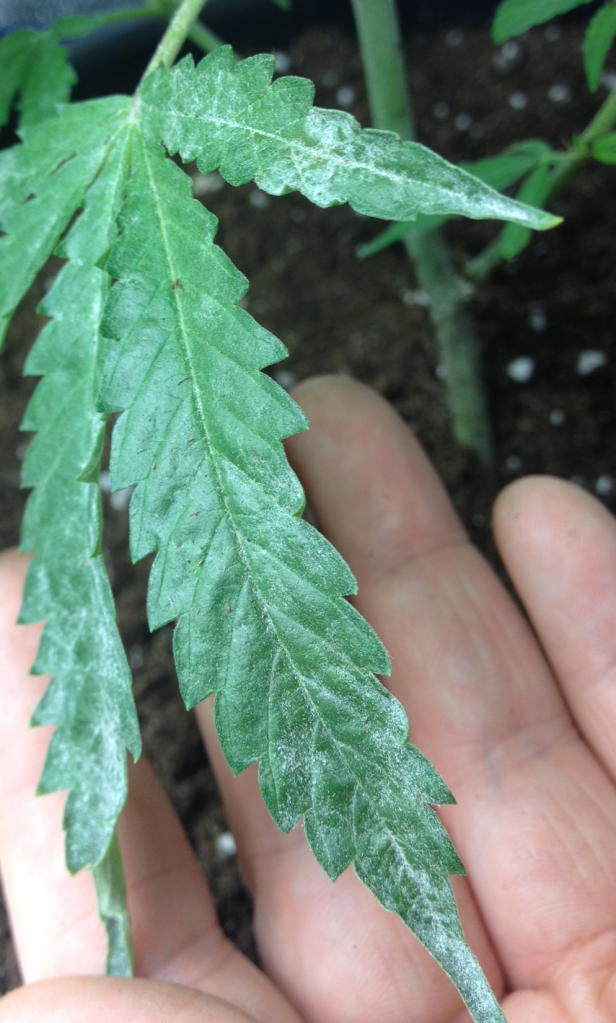
The mystery film
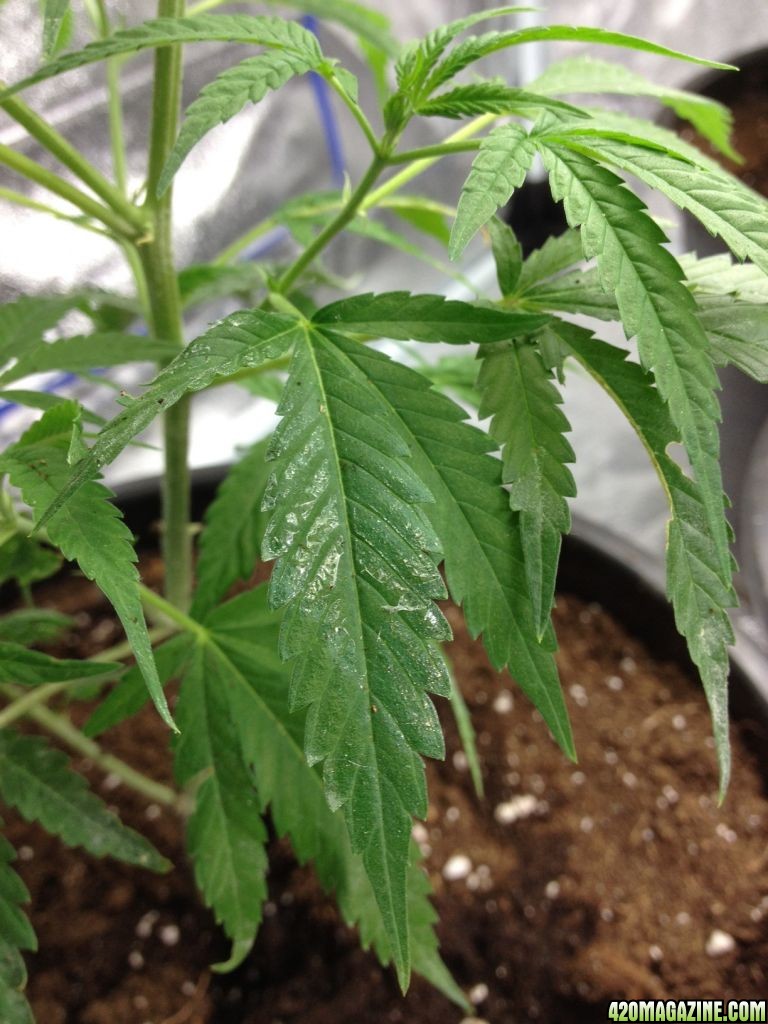
Problem #2 The bug problem.
Not sure what these little suckers are but they seem to embed themselves inside the leaf itself at times and at others they just seem to lay on the back surface. They're quite lazy which I found weird... no movement that I could see with the naked eye.... maybe they're stoned? haha (just kidding) I don't see much on them, just feet but I don't have a microscope to look closer. I should probably invest in one soon, perhaps along with my third light.
(just kidding) I don't see much on them, just feet but I don't have a microscope to look closer. I should probably invest in one soon, perhaps along with my third light.
(they're super small so I had a hard time capturing them, sorry)
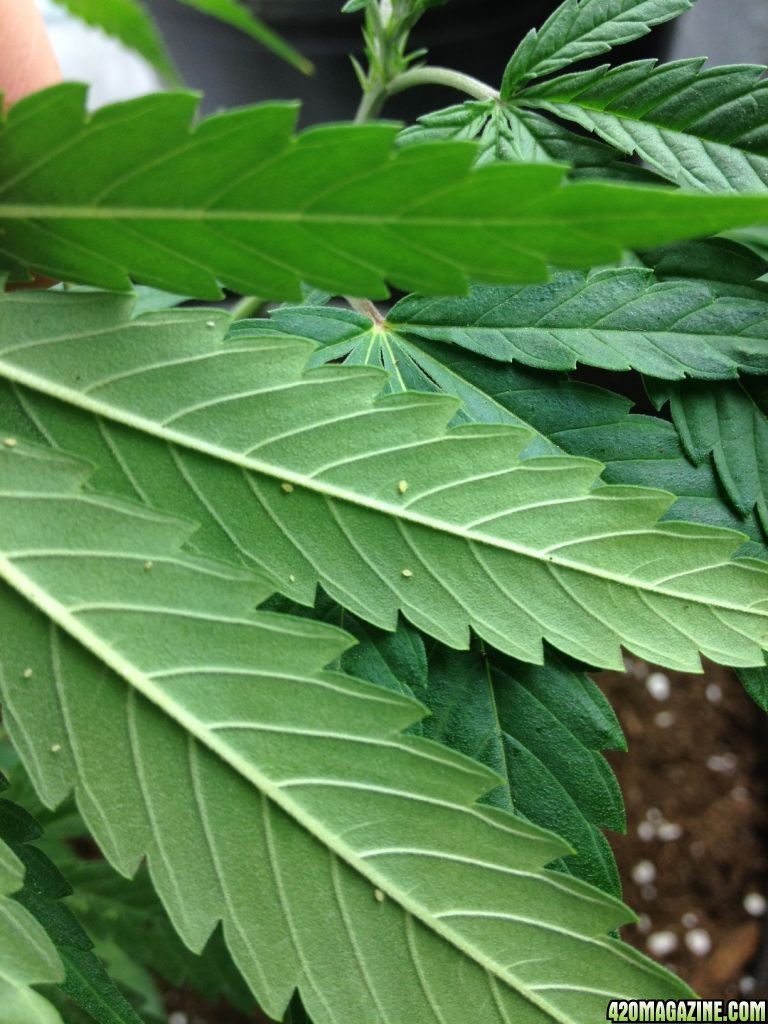
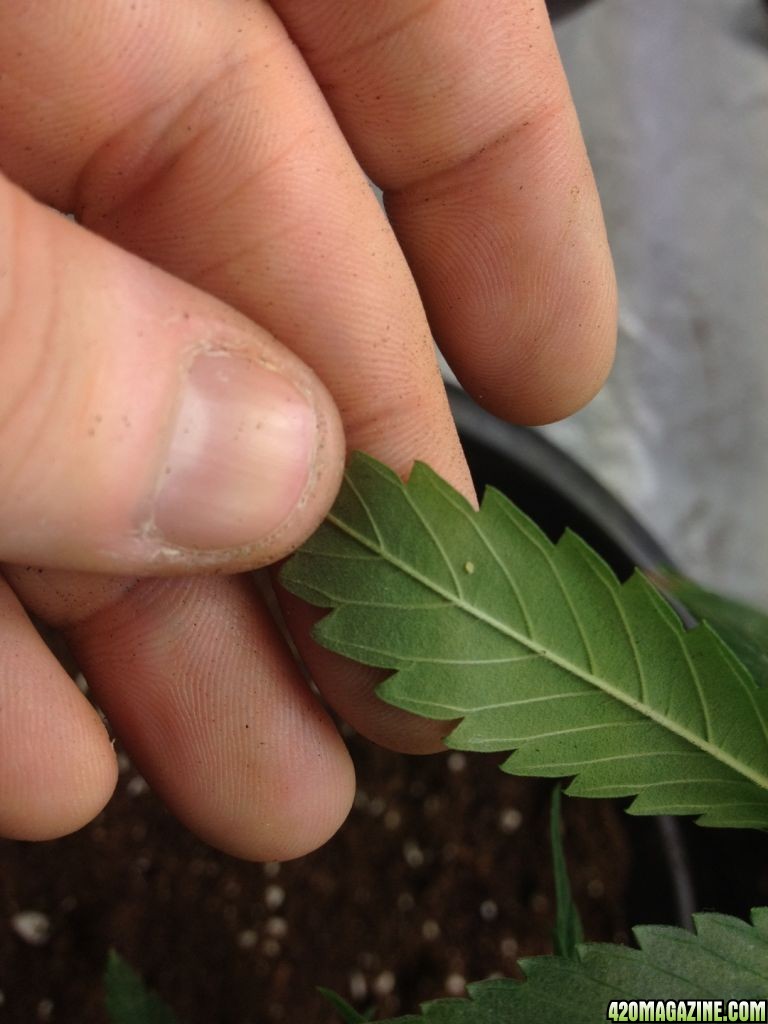
Problem #3 Yellowing leaves
A lot of my leaves are yellowing suddenly, some are curling and some look a bit deformed. I noticed the curling last week and the discoloring mostly yesterday after I watered... I've only watered them twice since transplant 4 days ago, 1 liter between them all after transplant and one liter the day after. The ph of the water I'm using is 7.8, I used .25ml of start booster to help new roots form after they were ripped apart from each other. I have only given the plants only 2 liters of water between them all, because after first watering (1L) the soil still appeared wet and acted like it didn't want to take more but it hasnt leaked out the bottom at all so maybe I haven't given them enough. Not sure if I should give them more or not but now that they're turning yellow, I'm quite afraid to give them anything until I know what is going wrong.
The soil PH reads 6.2 in case anyone was wondering, maybe my soil ph is too low or maybe my meter is a piece of crap... not really sure. Seems as though the PH of the water would raise my soil PH but it hasn't so I really have no idea. It's new soil so I'm not sure if it's always that low when you buy it.
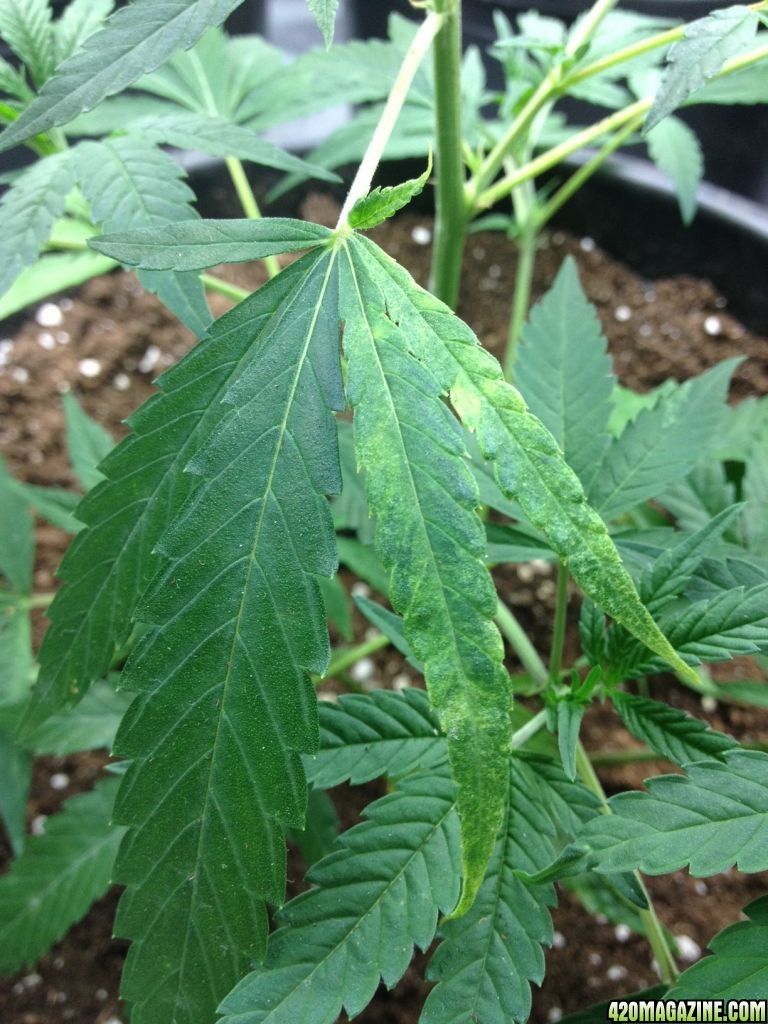
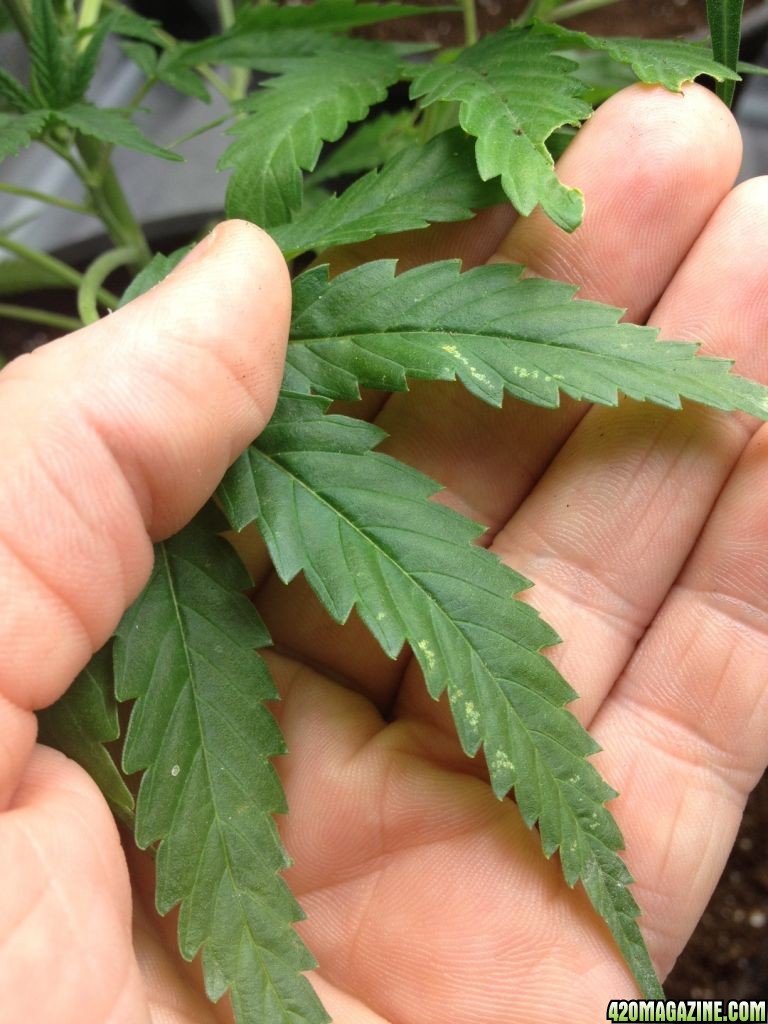
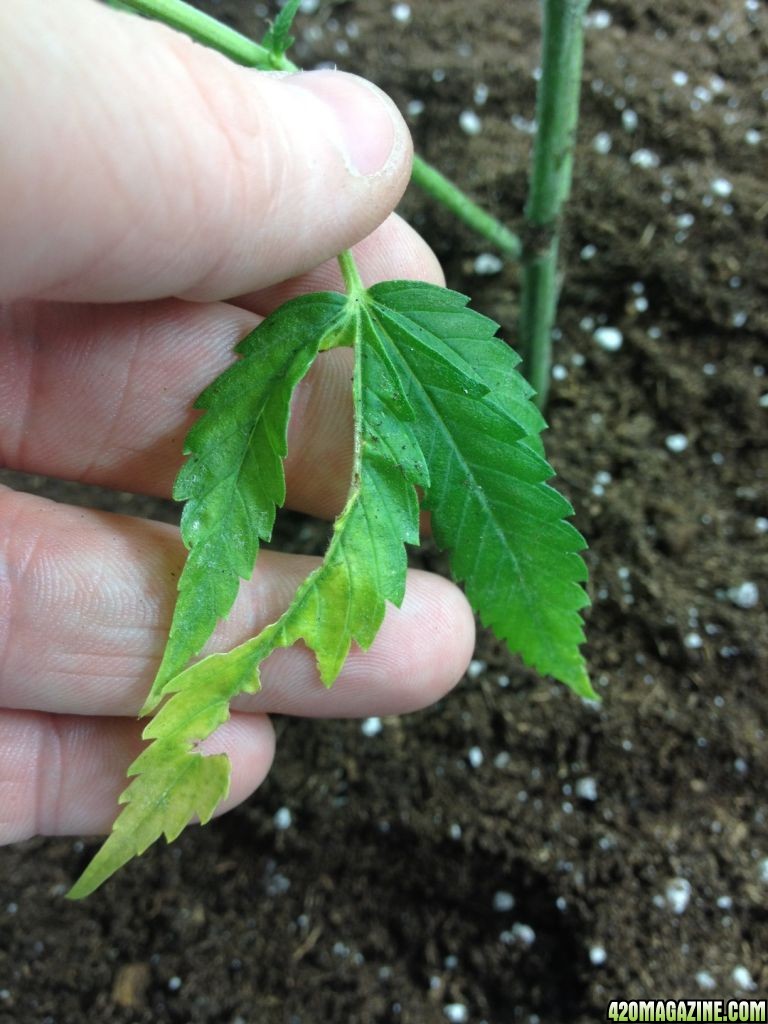
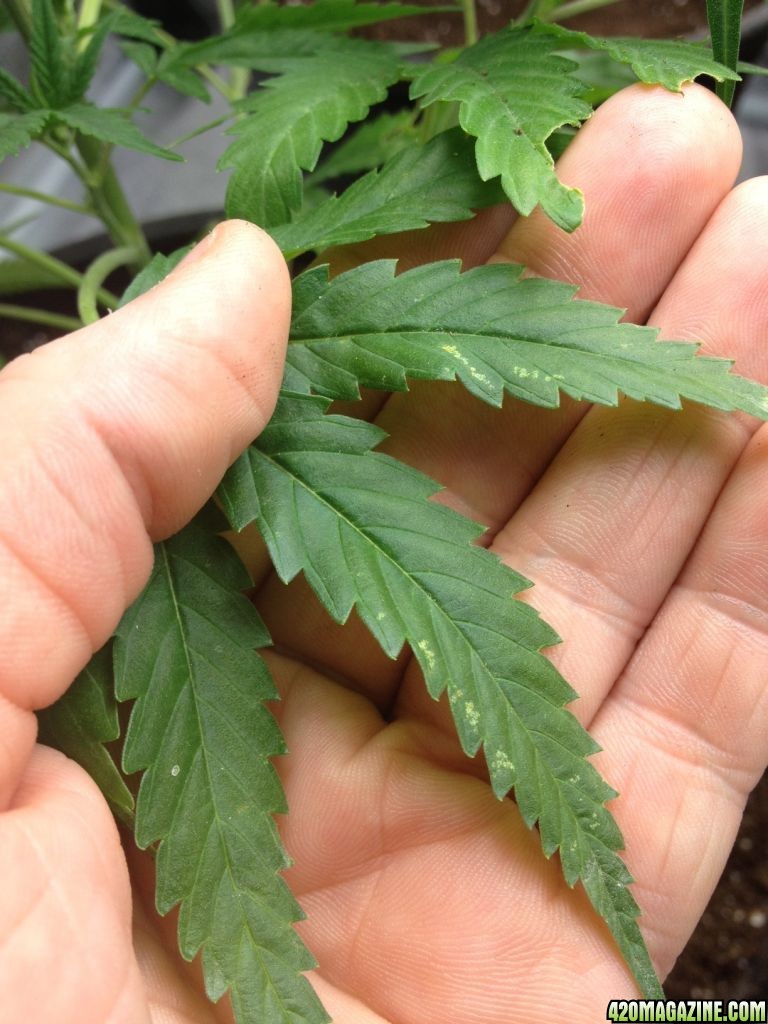
I was hoping my first grow wouldn't come with so many problems but I like to think of it as a learning experience. If someone out there could give me a bit of information about these issues and how to fix them or at least point me in the right direction, I'd really appreciate it!
If someone out there could give me a bit of information about these issues and how to fix them or at least point me in the right direction, I'd really appreciate it!
I'm including a buttload of photos because I think that's handier than trying to explain things. Sorry for the crappiness of them ahead of time, they're taken with my phone (the only thing I had handy).
Firstly, a bit about these plants. They are (mostly) NLX clones of about 4-5 weeks I'm guessing. They're with me for almost 2 weeks now, before that they were outside at a friend's place for about 2 weeks with 12 of them planted in 1 pot. When I got them, they were already showing signs of stress from overwatering and also the first two issues I list below. I tried my best to separate them and transplant them into new pots without much damage but they're currently very stressed (fan stems are completely purple on a few of them) and they don't appear to be growing right now. They're currently living in a fresh batch of Atami soil with nothing added to it and still vegging under 2 Secret Jardin T-neon armatures with two 75w bulbs in them. (I'd like to get a third but I'm holding off on that right now until these things are looking better) I'd like to send them to flower soon before they get any larger but I need to fix these issues first. I don't want my problems getting bigger, you know what I mean? ;D
Small overview of what my grow is looking like atm.
Problem #1 the white mystery fuzz/film.
This film on a lot of the lower fan leaves. In the beginning, I pulled a bunch of the worst leaves off with this problem, hoping it might help keep whatever it is from spreading but I don't know that it helped. At first i thought it might be mold but from what I've read, mold should wipe off. This won't wipe off at all and sometimes appears slightly hairy, and at others it seems like it's silky or slimy in appearance but I can't feel any difference between the two. I thought it could also maybe be spider mites... but then when I saw the bugs on my plant I wasn't completely sure since I don't see any actual webbing and the color of them is more yellowish... they look more like aphids perhaps? I'll add photos of them down below.
The mystery fuzz

The mystery film
Problem #2 The bug problem.
Not sure what these little suckers are but they seem to embed themselves inside the leaf itself at times and at others they just seem to lay on the back surface. They're quite lazy which I found weird... no movement that I could see with the naked eye.... maybe they're stoned? haha
 (just kidding) I don't see much on them, just feet but I don't have a microscope to look closer. I should probably invest in one soon, perhaps along with my third light.
(just kidding) I don't see much on them, just feet but I don't have a microscope to look closer. I should probably invest in one soon, perhaps along with my third light.(they're super small so I had a hard time capturing them, sorry)
Problem #3 Yellowing leaves
A lot of my leaves are yellowing suddenly, some are curling and some look a bit deformed. I noticed the curling last week and the discoloring mostly yesterday after I watered... I've only watered them twice since transplant 4 days ago, 1 liter between them all after transplant and one liter the day after. The ph of the water I'm using is 7.8, I used .25ml of start booster to help new roots form after they were ripped apart from each other. I have only given the plants only 2 liters of water between them all, because after first watering (1L) the soil still appeared wet and acted like it didn't want to take more but it hasnt leaked out the bottom at all so maybe I haven't given them enough. Not sure if I should give them more or not but now that they're turning yellow, I'm quite afraid to give them anything until I know what is going wrong.
The soil PH reads 6.2 in case anyone was wondering, maybe my soil ph is too low or maybe my meter is a piece of crap... not really sure. Seems as though the PH of the water would raise my soil PH but it hasn't so I really have no idea. It's new soil so I'm not sure if it's always that low when you buy it.
I was hoping my first grow wouldn't come with so many problems but I like to think of it as a learning experience.
 If someone out there could give me a bit of information about these issues and how to fix them or at least point me in the right direction, I'd really appreciate it!
If someone out there could give me a bit of information about these issues and how to fix them or at least point me in the right direction, I'd really appreciate it!





 & often a prize in POTM, NOFM & MOFM
& often a prize in POTM, NOFM & MOFM 